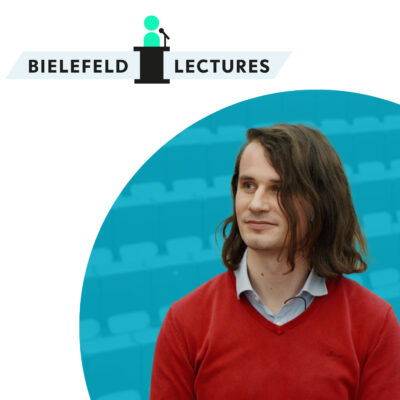Since October 2017, Dr Martina Hofmanová has been professor of mathematics at Bielefeld University. Recently she became member of the Bielefeld Collaborative Research Centre (SFB) 1283 in mathematics – she is in charge of a project called ‘Stochastic non-Newtonian fluids: regularity and numerics.’ We caught up with her to ask three questions about life and work at Bielefeld University.
What brought you to Bielefeld? Was it its good reputation in mathematics, or was it something else?
Yes, Bielefeld is very well known for its strong achievements in mathematics. Especially in my field, so it was definitely partly that. I had heard a lot about Bielefeld, and when I got an offer from them, I just went for it. The offer of a W2 professorship came in late 2016, and at that time it was a better offer than what I had at the Technical University Berlin. So it was the natural next step in my career. Then in November 2018 I got three outside offers for W3 professorships, namely from Karlsruhe, the Free University of Berlin and Ulm. But by that time I had come to know Bielefeld. So when they also offered me a W3 professorship, I decided to stay. The reason for that is that it is a smaller but very strong department, and it is all nice and friendly. The university itself is far smaller than say, FU Berlin or other universities, which makes my life much easier. Everything is close by. For instance, if I want to go up to the Center for Mathematical Economics it is just a couple of floors above my office. But it isn’t just geographically close, it is also really easy to talk to people from other departments which isn’t the case in Berlin or other universities I spoke to.
Now for someone who has no idea about mathematics, how would you describe your project?
I am interested in stochastic partial differential equations. And to explain, I firstly need to explain what partial differential equations are. These are equations that physicists came up with to describe for instance the flow of fluids. For example, when an aeroplane flies, how does the air flow around it? So for us mathematicians the question is: can you solve these equations? Does a solution exist? Now stochastic partial differential equations are a kind of generalization of these partial differential equations. We introduce certain stochastic terms, a certain randomness which should generalize the model and account for some uncertainty for example.
So how did the project actually happen? Did the idea for it come to you in Bielefeld, or did you have it before?
When I came to Bielefeld, I met Professor Lars Diening, who had been in Bielefeld for about half a year already. As we were both new here, we wanted to become part of the Collaborative Research Centre. We had an idea for a joint project and applied for the funding together. I had known him for longer, but we had never collaborated until I came to Bielefeld. We submitted our proposal in April 2018. Finally, the German Research Foundation accepted our proposal in December 2018 – that was the go-ahead for our project.
Martina Hofmanová (33) graduated at the Charles University in the Czech Republic where she finished her Master’s degree in mathematics. She earned her PhD at the École Normale Supérieure de Cachan, Atenne de Bretagne, in France. Before she came to Bielefeld University in 2017, she spent one year at the Max Planck Institute for Mathematics in the Sciences in Leipzig, and three years at the Technical University of Berlin.




